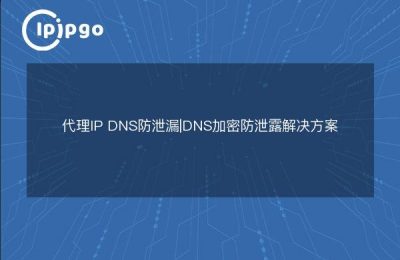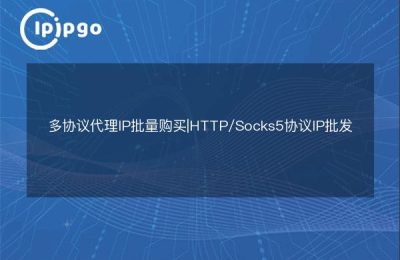
Why SEO keyword monitoring requires dynamic residential IPs?
Do global SEO optimization friends have encountered such a problem: in different countries search for the same keywords, ranking results vary greatly. For example, the word "sports shoes", in the United States may be the first three are Nike, Adidas, in France may be the dominance of local brands. If we only use the IP of a single region for monitoring, the data obtained is neither comprehensive nor real.
What's more troublesome is that frequent crawling of search engine data with a static IP is easily recognized as robot behavior. If the frequency of access is limited, or the IP is directly blocked, last year, a cross-border travel customers have encountered, they use the U.S. office of the static IP to check the keyword rankings 200 times a day, the result is that after a week Google directly blocked their access.
This is where the core value of Dynamic Residential IP comes into play:
- Simulate the search behavior of real users in different regions
- Changing network environments for different geographic locations with each request
- Break through the limitation of access frequency of single IP
Build a real-time rotation monitoring system in three steps
Here we share the actual solution we built for a cross-border e-commerce client, who needed to monitor the rankings of 300 core keywords in 15 countries/regions.
Step 1: Geolocation strategy design
Group target markets by priority, for example, take the United States, Germany and Japan as key monitoring regions and collect data six times a day; Southeast Asian countries collect data three times a day. Create corresponding regional groups in the ipipgo backend, and the system supports positioning by country, state, province and city.
Step 2: IP Rotation Rule Setting
| Monitoring Frequency | Recommended rotation intervals | concurrency control |
|---|---|---|
| Collected every 2 hours | Each IP change | ≤5 threads/country |
| Daily Collection | Change IP in time slots | ≤10 threads/country |
Step 3: Data Cleaning and Visualization
Use Python to write a simple cleaning script to filter out abnormal data due to IP changes (for example, a crawl suddenly all the keywords rankings plummeted, usually triggering the anti-crawl mechanism). It is recommended to use Grafana as a Kanban board, which can visually compare the trend of ranking changes in different regions.
Avoiding the pitfalls that anyone with a 90% would step into
Last year we analyzed 217 SEO monitoring failures and found these three issues to be the most common:
Pit 1: Data center IPs masquerading as residential IPs
A customer bought a cheap service labeled "residential IP", but the result of whois query found that they are all Amazon AWS IP segments. This kind of IP for monitoring, the data deviation rate is as high as 47%. ipipgo's residential IPs have been certified by the RIR organization, and in the background you can view the ASN information and network type of each IP.
Pit 2: IP purity is not up to standard
Extreme cases have been encountered where a certain UK IP was being used by 38 crawler programs at the same time, resulting in security validation being triggered just as the customer was accessing it. Our solution was to enableIP Credibility Screeningfeature that automatically filters risky IPs that have been flagged within 90 days.
Pit 3: Protocol Adaptation Issues
A local service customer needs to monitor the map search, and found that some of the monitoring nodes always timeout. Later it was found that the SOCKS5 protocol they used was restricted in some areas and returned to normal after switching to HTTP protocol. ipipgo supports one-click switching of all major protocols, and it is recommended that multiple protocols be verified in parallel during the testing phase.
QA Session: Key Questions and Answers
Q: How to choose between dynamic IP and static IP?
A: High-frequency monitoring (more than 1 time per hour) must be dynamic IP, long-term trend analysis can be paired with static IP. ipipgo supports a mix of both types, which can be set up separately in the background when creating a task force.
Q: How do I verify the authenticity of the IP's geolocation?
A: One of the three validation steps is missing:
1. Use maxmind to check the IP database.
2. Visit google.com/location verification
3. Checking the local language version of the website display
Q: What should I do if I encounter CAPTCHA blocking?
A: Three-step emergency program:
1. Immediate suspension of tasks in the current IP segment
2. Enable traffic cooling mode in the ipipgo backend
3. Switching User-Agent templates and reducing the frequency of 30% requests
Through the rational use of dynamic residential IP, we helped a 3C accessories brand to increase the keyword ranking crawl accuracy from 58% to 92%, and the number of abnormal interruptions dropped by 76%. Especially during the holiday promotion period, the real-time monitoring data helped them to adjust the advertising strategy of 7 national stations in a timely manner.
ipipgo's global residential IP network now covers all G20 countries and major emerging markets. With intelligent routing algorithms, the available nodes with the lowest latency can be automatically selected. The technical team has specially developedDedicated channel for SEO monitoringThe HTTP header information is implanted with real browser fingerprints to effectively reduce the risk of being recognized.








